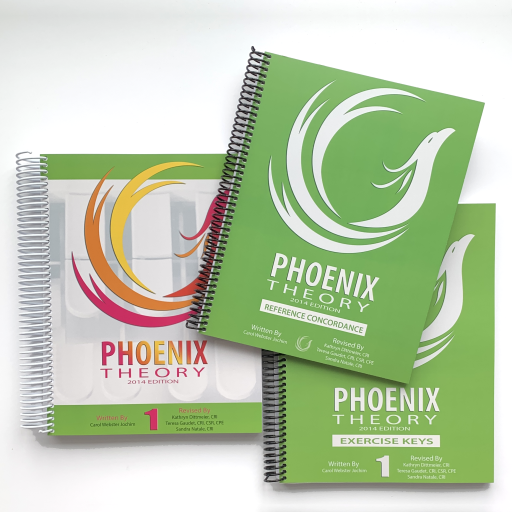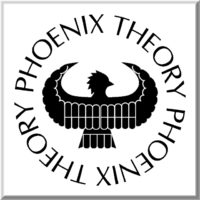Phoenix theory
This page is incomplete. If you know about this subject, please contribute to the wiki by adding more information.

Phoenix theory is a conflict-free realtime theory created by Carol Jochim. It is characterized by the Vowel Omission Principle and its heavy emphasis on phonetic writing. It is considered to be on the longer side, requiring more average strokes per word.
History

Phoenix theory may have been invented around 1997 by Carol Webster Jochim[1], who hails from Phoenix, Arizona.
Compared to other theories such as StenEd theory, Phoenix theory is a relatively newer theory that was created with realtime and conflict-free writing in mind.
Jochim wrote a mathematical argument on her view on shortening stenographic writing, which can be read here. She argues that overuse of briefs could be a hindrance compared to "increased stroking speed and judicious use of briefs".
Today, the Phoenix theory materials are available through Chicory Meadow's website here.
Primary Characteristics
Phoenix theory is characterized by a strong emphasis on phonetic rules, and avoiding spelling rules as much as possible. For example, the vowel sounds in bird, were, word, earth, and heard are all represented by the steno U.
This is accomplished through the Vowel Omission Principle, a patented[2] system that "virtually eliminates spelling dependency and, at the same time, automatically eliminates the vast majority of conflicts in word boundaries".[3]
Phoenix theory uses a selector stroke, R-R, to cycle through homonyms or conflicts. Alternately, the asterisk can be used to disambiguate conflicts not covered by other rules.
A steno comparison chart that aims to put Phoenix theory in a good light written by Jochim can be accessed here. Similarly, a chart comparing Phoenix theory with Stenograph theory and arguing for Phoenix having relatively less strokes and keys, and less potential for conflicts, written by Jochim can be accessed here.
Acquisition
Phoenix theory materials are available for purchase through Chicory Meadow's website here.
Phoenix theory can also be learned by attending a court reporting school that teaches it.
Learning Resources
- See also: Stenography Textbooks
There are a total of five books: two textbooks, two exercise keys, and a reference and concordance book. There are also audio files available for purchase.
